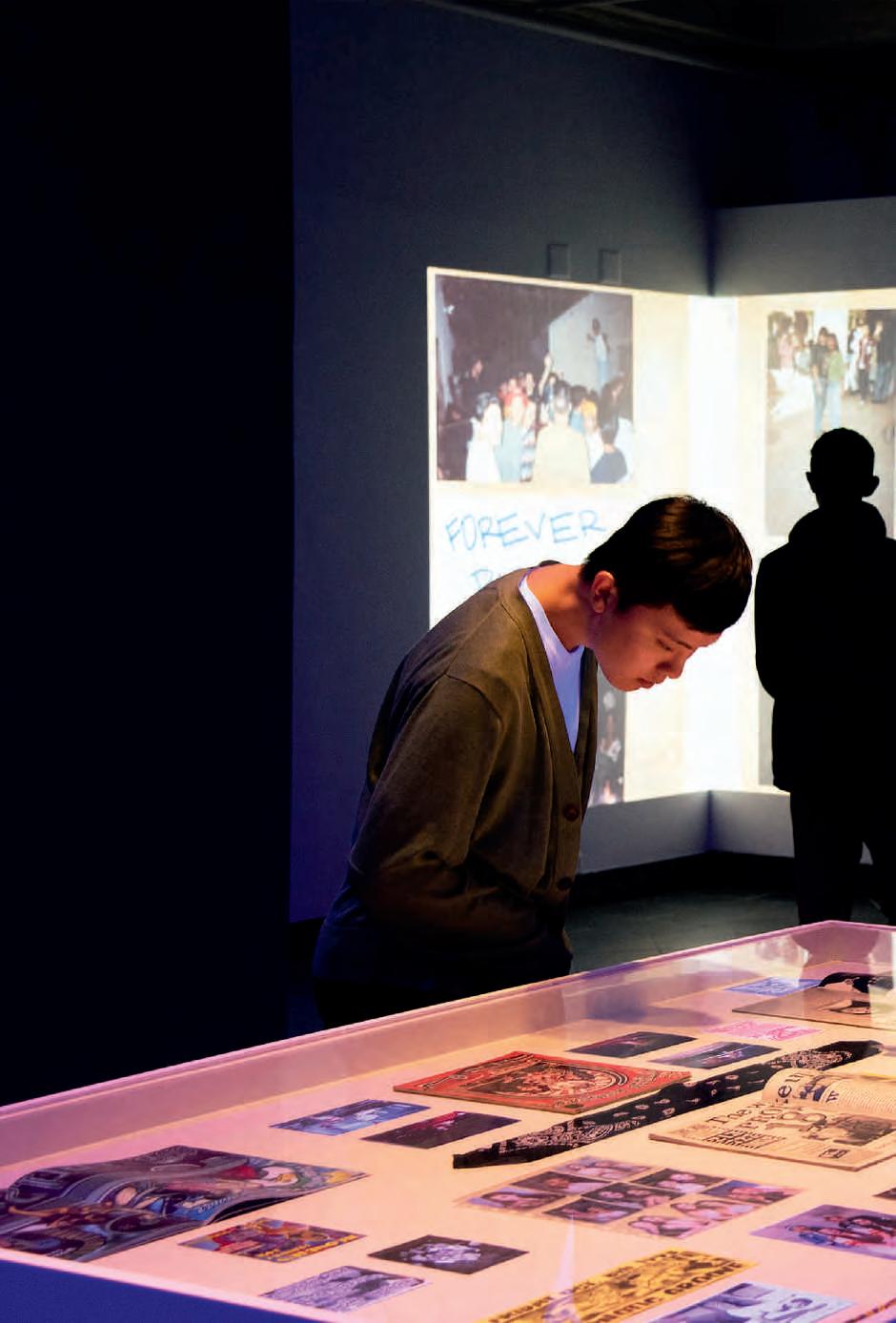
2 minute read
From the Director

KEN KOLTUN-FROMM, ROBERT AND CONSTANCE MACCRATE CHAIR IN SOCIAL RESPONSIBILITY AND PROFESSOR OF RELIGION KOSHLAND DIRECTOR, JOHN B. HURFORD '60 CENTER FOR THE ARTS AND HUMANITIES
PHOTO: Patrick Montero
On a cold Monday in December, my philosophy professor colleague Joel Yurdin warmed our day with a discussion over lunch about the Coen brothers’ True Grit. He showed a number of small clips from the film in the VCAM lounge area, where students, staff, and faculty sat comfortably in an informal circle, munching and reflecting on notions of virtue, the good life, and moral character. There was nothing particularly special about this gathering. The Hurford Center often utilizes the lounge area for guest speakers and discussion, enjoying the goodies stashed in the VCAM kitchen. Nobody looks twice at this eclectic gathering of the Haverford community, nor do we marvel at a sophisticated conversation about a Coen brothers’ film. But as anthropologist Michael Taussig thoughtfully suggests, witnessing the beautiful in the mundane is a courageous act of recognition, when we refuse, “if only for an instant, to blink an eye.” If we look more steadily at Joel’s lunchtime discussion, we will see how the Hurford Center enlivens the arts and humanities at Haverford College.
At the Hurford Center, we are incubators of creativity and exploration in the digital and material playground we call VCAM–the 24/7 hybrid space for filmmaking, exhibition, and other creative pursuits. We enable disparate communities to gather in the shared desire for critical knowledge. We believe the kind of diversity witnessed in VCAM on that cold Monday afternoon empowers us to be the kind of scholars and students we wish to be as we do the humanities and the arts at Haverford. This is the everyday beauty that we often fail to see because it has become more and more commonplace. But that does not make it any less glorious. This Year in Review is a snapshot, a witnessing, to that everyday brilliance we call the arts and humanities. You too should refuse to blink an eye to this triumph.
To make the work of the Hurford Center more legible, tactile, and enduring, we have reviewed all our programs and have clustered them into six thematic units: 1) Artistic Exploration and Practice; 2) Groups, Seminars, Forums; 3) Civic Engagement and Partnerships; 4) Student Summer Programs; 5) Research and Curricular Experimentation; and 6) Breaking the Rules. What do we mean by breaking the rules? Here are but two examples of programs we are supporting next year that break conventions: 1) a group of ten scholars will gather weekly to create a number of four-year, one credit course modules designed for first generation, underresourced, and/or underrepresented students focused on navigating through school. Students would receive a ¼ course credit for each year and maintain commitment over a four year period. Currently Haverford has no curricular structures to enable a course like this; we hope these ten colleagues figure out how to change that. And 2) we will take part in a search for a postdoctoral fellow from a historically underrepresented group at the College. They will be housed in the Hurford Center for the two years of the fellowship, but then become a member of an academic department as a tenure-track, assistant professor. This American Council of Learned Societies (ACLS) supported fellowship is one of the ways Haverford seeks to diversify its faculty, and it presents a radically new pathway for doing so.
We are excited about our future, in part because this past year has been so rewarding. So don’t blink: become a witness to the beauty of the arts and humanities here at Haverford. Be courageous in that refusal to turn away.







